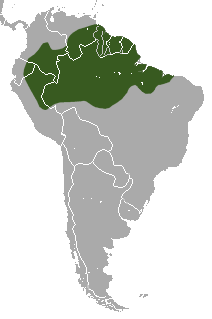Kingdom: Animalia
Phylum: Chordata
Class: Mammalia
Order: Pilosa
Family: Megalonychidae
Genus: Choloepus
Species: C. didaactylus
Conversational Status: LC (Least Concern)
Linnaeus's two-toed sloth is a species of sloth from South America. This species is also known as Southern two-toed sloth or unau.
Characteristics
This species is larger than three-toed sloths. They have longer hair, bigger eyes, and their back and front legs are more equal in length. Their ears, hind feet and head is generally larger than Bradypodidae. They do however have a shorter tail. Their shoulder height, the height from the shoulder blade to the tips of the claw is longer than three-toed sloths, indicating longer arms.

Habitat
They are found in the Wild of Venezuela, Guyanas, Colombia, Ecuador, Peru
and Brazil north of the Amazon River. Recently, there are evidence that
suggests that this species's range expands into Bolivia.

Behavior
It is a solitary, nocturnal and arboreal animal, found in rainforest. It is able to swim, making if possible to cross rivers and creeks. They live in ever-wet tropical rainforests that are hot humid. They tend to live in areas where there is a lot of vine growth so they can easily travel from tree to tree in the canopies of the forests. They mainly eat leaves, but there is lacking data on the extent of their diet due to their nocturnal lifestyle and camouflage.

Predator
The two-toed sloth falls prey to wild cats such as the ocelot and jaguar as well as large birds of prey such as the harpy and crested eagles. Predation mainly occurs when the sloth descends to the ground in order to defecate or change trees. Anacondas have been known to hunt sloths.
Life Cycle
Linnaeus's two toed sloth has a ten-month gestation period. Their inter-birth rate extends past sixteen months so there is not an overlap pf young to care for. There is only one offspring per litter and the young becomes independent at about a year old. It take longer for two-toed sloths to become independent as well as the gestation period is longer than in three-toed sloths, It has been suggested that this difference may be caused by their difference in diet.
No comments:
Post a Comment